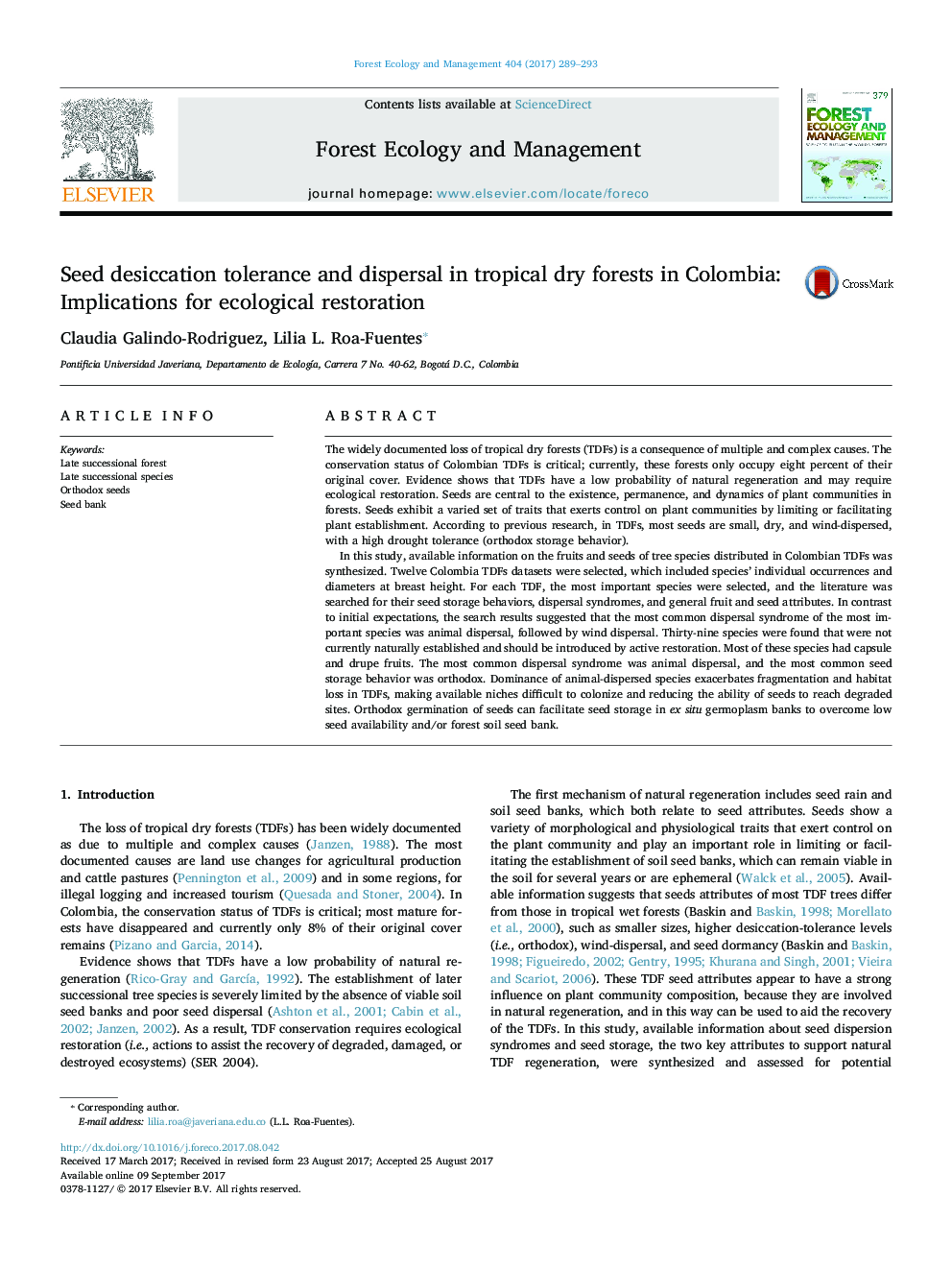| کد مقاله | کد نشریه | سال انتشار | مقاله انگلیسی | نسخه تمام متن |
|---|---|---|---|---|
| 6459133 | 1421354 | 2017 | 5 صفحه PDF | دانلود رایگان |
- Wind is not the dominant mode of seed dispersal in Colombian tropical dry forests.
- Tree regeneration occurs mostly from animal-dispersed seeds.
- Restoration of tropical dry forests may relate to size-abundance correlations of tree species.
The widely documented loss of tropical dry forests (TDFs) is a consequence of multiple and complex causes. The conservation status of Colombian TDFs is critical; currently, these forests only occupy eight percent of their original cover. Evidence shows that TDFs have a low probability of natural regeneration and may require ecological restoration. Seeds are central to the existence, permanence, and dynamics of plant communities in forests. Seeds exhibit a varied set of traits that exerts control on plant communities by limiting or facilitating plant establishment. According to previous research, in TDFs, most seeds are small, dry, and wind-dispersed, with a high drought tolerance (orthodox storage behavior).In this study, available information on the fruits and seeds of tree species distributed in Colombian TDFs was synthesized. Twelve Colombia TDFs datasets were selected, which included species' individual occurrences and diameters at breast height. For each TDF, the most important species were selected, and the literature was searched for their seed storage behaviors, dispersal syndromes, and general fruit and seed attributes. In contrast to initial expectations, the search results suggested that the most common dispersal syndrome of the most important species was animal dispersal, followed by wind dispersal. Thirty-nine species were found that were not currently naturally established and should be introduced by active restoration. Most of these species had capsule and drupe fruits. The most common dispersal syndrome was animal dispersal, and the most common seed storage behavior was orthodox. Dominance of animal-dispersed species exacerbates fragmentation and habitat loss in TDFs, making available niches difficult to colonize and reducing the ability of seeds to reach degraded sites. Orthodox germination of seeds can facilitate seed storage in ex situ germoplasm banks to overcome low seed availability and/or forest soil seed bank.
Journal: Forest Ecology and Management - Volume 404, 15 November 2017, Pages 289-293
